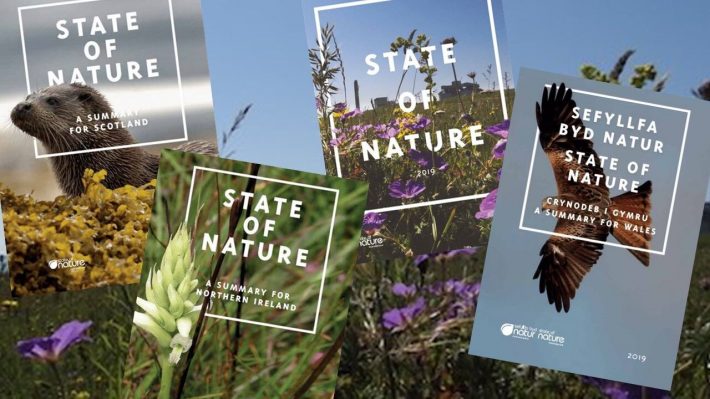Reflections on the State of Nature report 2019
Fiona Burns is a BES member and Conservation Scientist at the RSPB. Fiona has been involved in all three State of Nature reports, and here she reflects on her personal highlights and challenges this time around.

The State of Nature report 2019 was published last week. For those of you who haven’t come across the State of Nature reports before, they aim to bring together as much information as possible about the state of biodiversity in the UK, as well as the UK Overseas Territories and Crown Dependencies, the environmental drivers of change, and summarise it in clear high-level metrics that allow for effective communication.
They are produced by the State of Nature partnership, an ever-growing collaboration between a huge range of organisations involved in nature conservation, from recording societies and research organisations, to conservation charities. Importantly, this year we welcomed the statutory nature conservation organisations, for example Scottish Natural Heritage, as full partners to the 2019 report.
A clear objective assessment of the health of our environment, agreed across the nature conservation sector, remains the key strength of the report. For me, it helps in two areas: firstly, if we as conservationists can agree, it provides a stronger message to others; and secondly, once you have broad scale agreement of what is going on and why, you can focus on agreeing solutions. It is also inspirational to work with people from such a spectrum of organisations and hear how they are helping to save nature.
Another highlight of the report is the opportunity to thank all the people involved in monitoring and recording species in the UK. A staggering 70, 000 people contribute to national recording schemes or local record centres1 and ~19, 000 take part in structured monitoring2. These data are critical to assessing the status of species and the report relies heavily on them.
In this report I focussed on the technical content and continue to be impressed that we are able to include more and more information in each iteration, due to the hard work of partner organisations. Our colleagues at CEH were able to create multi-species indicators charting the change in species’ distribution in England, Scotland and Wales for the first time. They also revealed an apparent recovery in freshwater invertebrate species, likely due in part to improved water quality in the past two decades3.
I am proud of the metrics we produced; however, there is room for improvement. In particular, the reasons underlying species trends can become obscured when you combine many species trends in a multi-species indicator. If we can link the metrics of species status more closely to the environmental drivers of change, it may give a more powerful message. For example, it would be great to have separate indicators showing the change in species thought to be positively impacted by climate change and those thought to be negatively impacted.
The grand challenge is of course the results themselves; 15% of species assessed at risk of extinction from Great Britain, declines in species’ abundance and occupancy, and the UK being likely to meet only five of 20 Aichi targets4. Although the report also presents lots of wonderful case studies of people working together on successful conservation projects, we can’t lose sight of the scale of the challenge. The recent IPBES global biodiversity assessment5 stated that we need ‘transformative changes’ in order to conserve and sustainably use nature. This is our challenge as conservationists as we come towards 2020, a pivotal time for decision making both nationally and globally.
An assessment such as State of Nature can only be a first step towards the kind of transformative change we need. Nevertheless, I hope that it will be an important resource for our colleagues when they come together to make these national and international commitments, and that it will play a part in delivering increased action and ambition for nature.
- Robinson A, et al. (2018) Terrestrial evidence review part 1: The value of JNCC’s terrestrial evidence programme. JNCC. http://jncc.defra.gov.uk/pdf/JNCC1801_Terrestrialevidencereviewpart1.pdf.
- Pocock MJ, et al. (2015). The Biological Records Centre: a pioneer of citizen science. Biological Journal of the Linnean Society, 115: 475–493.
- Outhwaite CL, et al. (in prep). Complexity of biodiversity change revealed through long-term trends of invertebrates, bryophytes and lichens.
- JNCC (2019). United Kingdom’s 6th National Report to the Convention on Biological Diversity. jncc.gov.uk/our-work/united-kingdom-s-6th-national-report-to-the-convention-on-biological-diversity/.
- IPBES (2019). Summary for policymakers of the global assessment report on biodiversity and ecosystem services of the Intergovernmental Science-Policy Platform on Biodiversity and Ecosystem Services. IPBES secretariat, Bonn, Germany.
Like what we stand for?
Support our mission and help develop the next generation of ecologists by donating to the British Ecological Society.